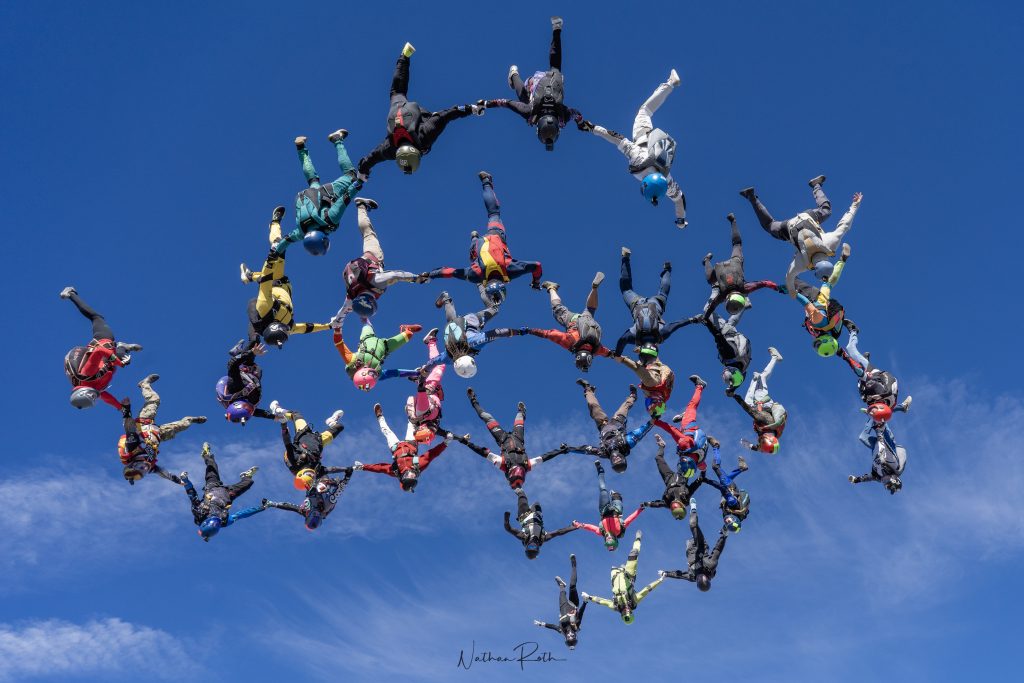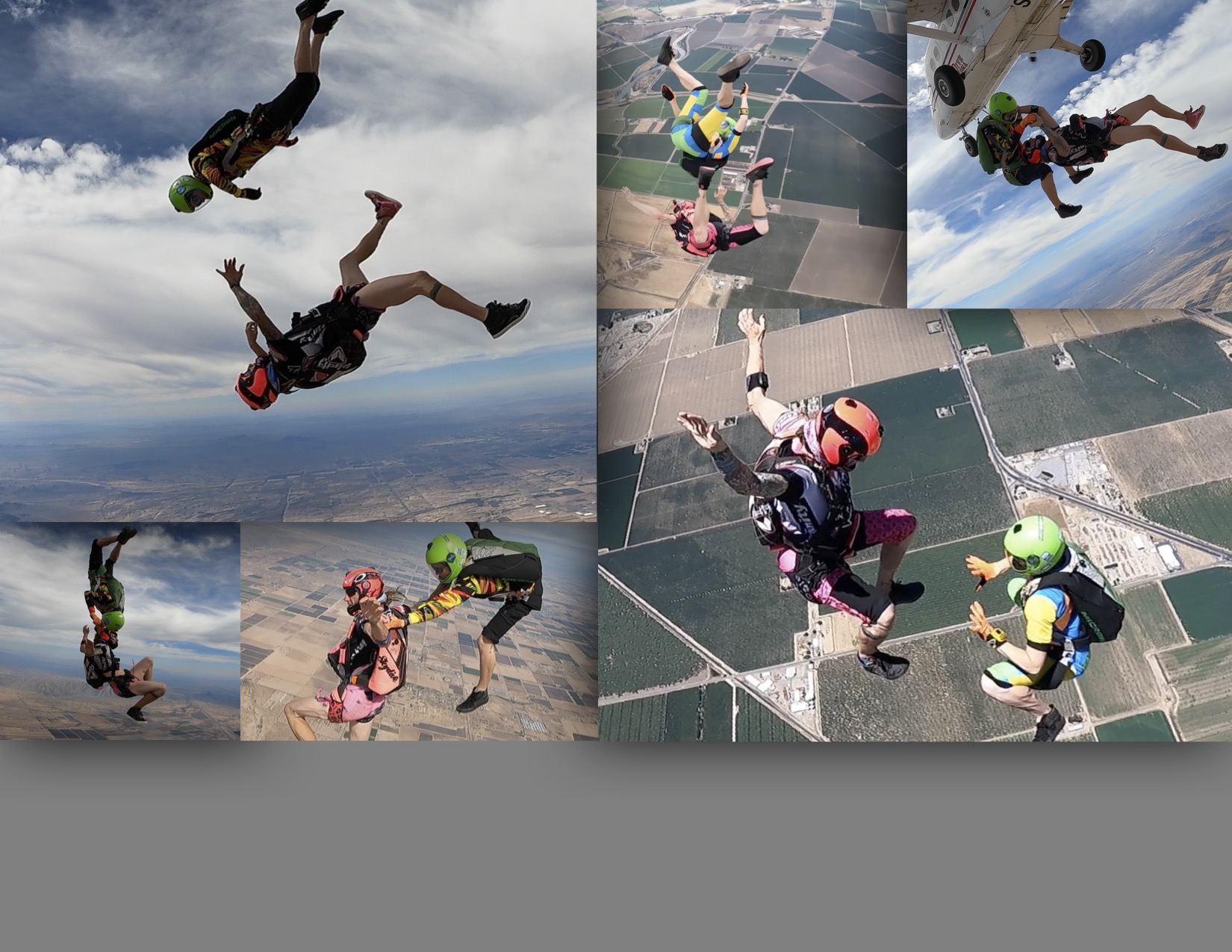Well, it’s been about 2 weeks since the 3rd round of Matt Fry’s experimental headdown bigways. The photos have been flying across the social media. Nate Roth took beautiful pictures that show the pretty side of progress, but they don’t tell the tale of what we’re learning and how we are learning it.
So I went back through my blogs a little to see what I’d written last year when I went to the first in the series of these events, but I apparently wrote very little or none. What are these about? Well, the traditional flower petal shape/pods doesn’t seem to be working. Two rounds of 200way attempts led to frustration and infighting and bitterness and pouting and plenty of temper tantrums thrown by grown men. So, I’m glad to see we’re learning a lesson about doing the same thing on repeat and trying new stuff.
I’m sure plenty of people get plenty bored with me jawing on and on about how belly does things. But I do have to say belly does some neat stuff. I think right now one of the things that could draw me back to belly are their bigways. The Mustache at the All-American Bigways at Skydive Chicago last year looked fun and kooky. The Challenge always has neat looking formations. I just don’t want to break off in the basement and pull slightly above AAD fire. So, I’m scared of the big belly ways these day. But the point is that they do neat stuff. Bipoles and whacker lines and gems and grids and diamonds and all sorts of stuff. Yes, I do acknowledge that the option to grip legs goes really far in offering variety for formations, and that flying bigways without a real threat of corking and killing someone makes belly a tamer beast, but I still give the discipline credit for the creativity in it.
So that leaves us here: Freeflyers trying to come up with a different standard formation that just might fly easier. Largely, we’re experimenting with whacker lines, arching off of whacker lines. The “spines” and “ribs” terminology. Where the one or two people branching way from the base are the vertebrae in the spine and the rest of the whacker line off of them are the rib (each person is a riblet). The first person in that whacker line (whether that’s the 2nd or 3rd person away from the base) then is the “closer” I guess we landed on? Anyway, the terminology is funny and fun, which I like.
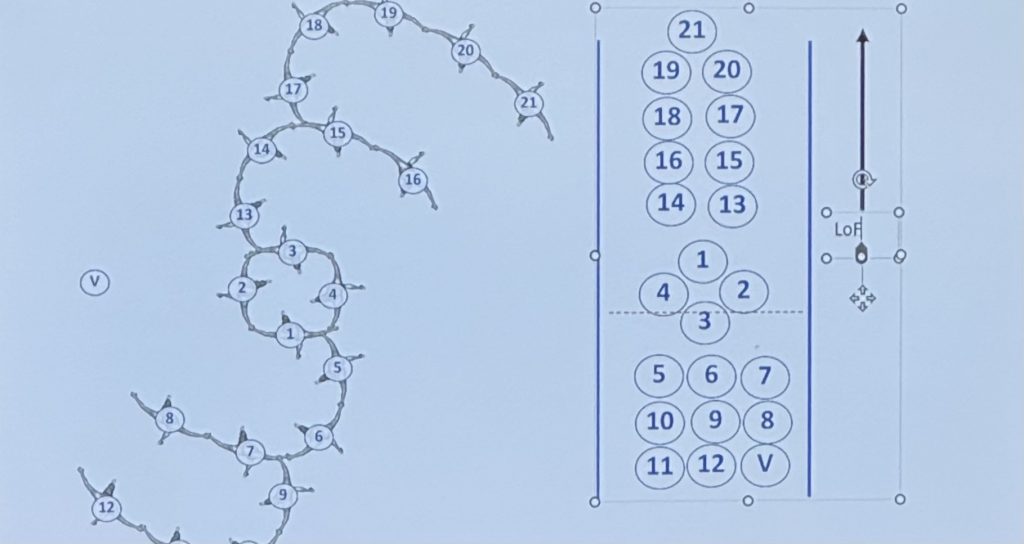
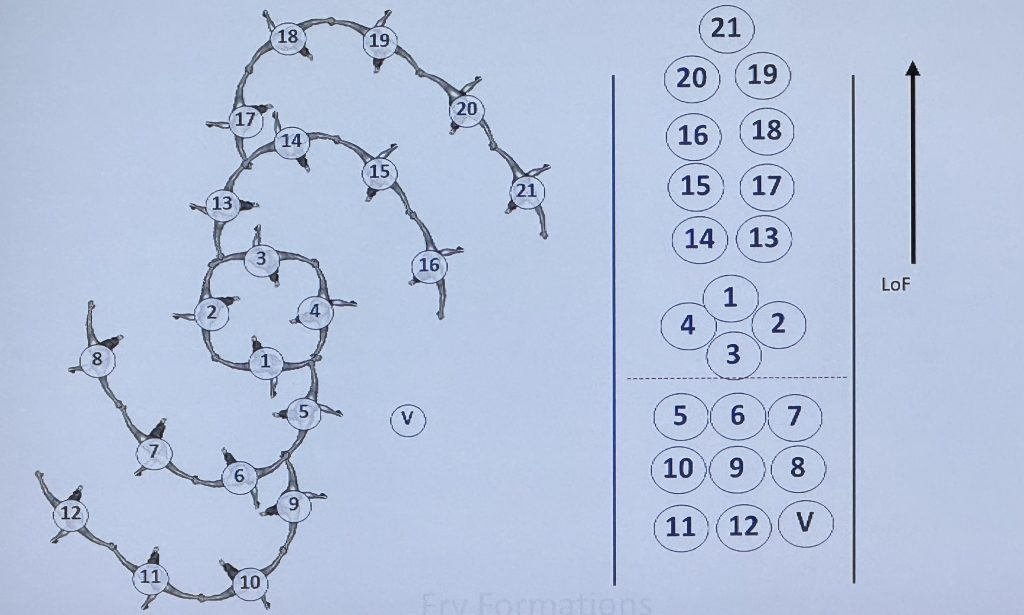
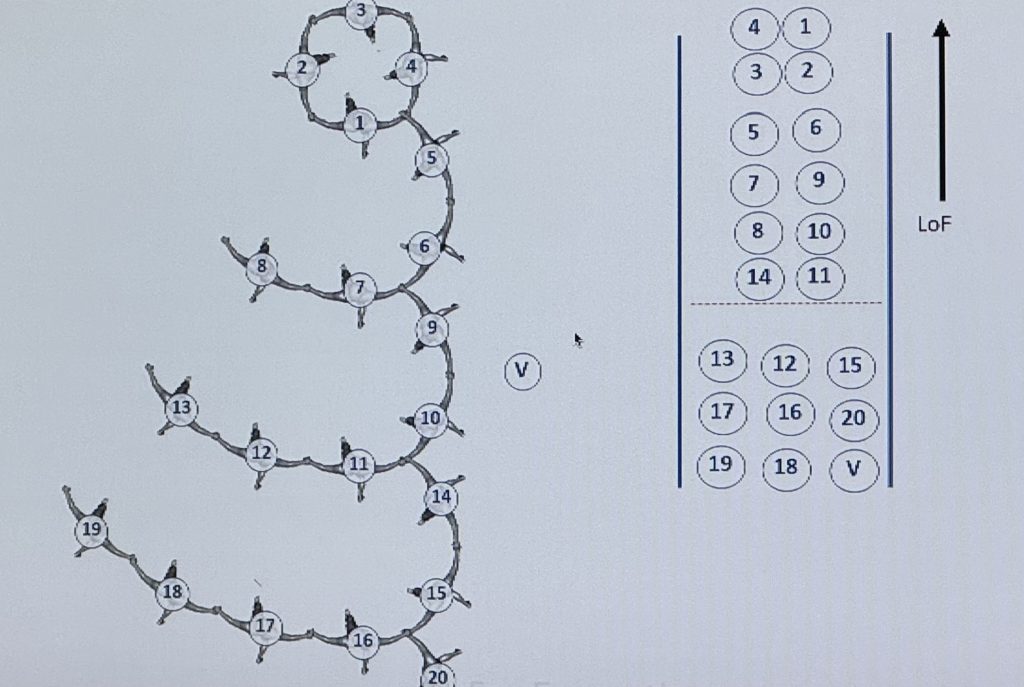
And so we did a whole weekend of doing formations like this, both 20 and 40ways. We experimented with balanced formations, unbalanced formations, whacker lines that stretch in the same direction or opposite directions. Two people in the spine before the closer. One person in the spine before the closer.
And we asked a lot of questions to Matt, and to each other, and to ourselves. What should the levels be like for this slot? What is a radius of curve for the whacker lines? Who should be flying strongly in their slot and who should allow a lot of flexibility and give, letting the whacker line move as it may. Am I looking over the bicep of the person in front of me? Or their elbow? Does that change based on the length of my arms, from person to person? What makes the first stinger’s job easier? What makes the second stinger’s job easier? And on. And on. And on. Because there’s no built-in assumptions about what “doing it right” looks like. Because there’s no set guidance, no real rules on what we should be doing. Which is amazingly freeing.
And also headache inducing. Every single thing we take for granted about our current formations almost seems like it could be argued and debated. In a lot of arenas, I find myself falling down a rabbit hole of the subjective. For example: we do a skydive and someone has an opinion about how a slot flew. Well, obviously their opinion is valid because that’s what they experienced on the skydive. But how firmly can we apply that to other people? What if that person has freakishly long arms so that slot felt easy? What if everyone around that person did something particular so their job felt easy? What if what if what if? When we ended the days, I found it hard to discern clear take-aways from what we flew. Yes, these are more or less a bit easier than pods with bridges, I believe, but we’re flying 20 and 40ways. So, nearly everything is manageable at that scale. We’ve got an end-of-event survey poll that I’m filling out after this and I’ll find it interesting to see what the results end up being. But all in all. Progress was made, or so I hope, because I think we’re all pretty willing to tell ourselves it’ll be better this next time around, this next attempt.
Saturday after jumping, we spent 2 hours in the debrief in a structured discussion about everything. The day. The jumps. Why it’s working. Why it’s not. Is this just hard because it’s hard and un-do-able? Is it hard because we’ve never done this before? Because we don’t all have the collective muscle memory for these skydives? Who knows. (I like them because most of the skydiving faces inwards and I think that is a HUGE help.)
But then we also covered the contentious question that surrounds the bigway circuit. Do the right 200 people exist out there that can to a 200way head down record? Can we get them all to come out? Are they too jaded and old? Do we spend enough time training to be ready for this? Is it possible to do it?
We talked about moving people around in the formation during the record. How do we move in people doing well? How do we move out people doing less well? How do you, as an organizer, have a conversation with your homie (that you gave an invite to) about how they’re not doing what they need to and that they oughta sit down or be moved to a place in the formation with less prestige. How do we handle the bench? Dan BC popped into to tell us about the bench on belly bigways; it’s not people who can probably do it. It’s people who can definitely do it.
We talked about cuts. How do we cut people. Who do we cut. When? How does that work? The ladies, once again, all talked about how well P19 went. Which I’m sure everyone who wasn’t part of it is tired of. But it went so good. It really did. It helps that it was fully funded. But I do think the other organization around it set the whole thing up for a lot of success. How we trained. How the week went. How cuts were handled. In that, we got to talking about pie crusting. Does it make sense to just lop off everyone on the outside, even if some are doing well? Could we cut 5 here, 3 there, when they’re sucking it up? (That would affect the cost, if you don’t sit down an entire planeload at a time.)
In relation to cost and cuts, another interesting thought that was brought up: Can we get sponsors? ReWu tossed this one out there, and after she said it, I was gobsmacked because it both seems obvious and like a great idea. I mean, why not look for some corporate partners? I’d be all about it. If, as a sport, we’re getting into this mentality of tying a message to a record, an achievement (for example Stand Together), why not get some sponsors on board who might be excited about the message and marketing? But I’m not a marketing person. I know nothing.
Back to cuts, Dan BC brought up an example where he had to cut someone who was doing *fine*. The person wasn’t screwing up. Dan just had a person on the bench who could not only do *fine* but could bring strength to that sector that wasn’t succeeding. So he had to swap them. And that sucks to tells someone who is doing something passably well that it’s still not good enough. I believe that some of the organizers at the 200way lacked that. I believe that the “Bring the right team” mentality that’s oozing its way into the big way scene won’t allow for that. The organizers are so closely bound to the people they invite that they are blind to when “their people” are fucking it up. It’s a bad mentality.
Honestly, if the “bring the right team” approach was used on the last 200way, I would have never gotten an invite. (Maybe I’m not part of the “right team”.) But the who-you-know and the choosing favorites would have kept me out of it. I’ve ranted about it before, but for the last attempts, you had to be invited to be invited to the CA sector “try outs”. (Very much a misnomer.) Maybe, if that’s the approach going forward, I’ll have enough social capital to keep me around but I’m not counting on it. I’m really happy to be participating in these events because they’re neat. I love discussing minutiae of skydiving: Season training strategies, block technique, levels, choosing teams, etc etc. The nitty gritty is fun to chat about. So these are super cool. And I think the new formations might really help lead us to success, but I think “bring the right team” will be our downfall.
